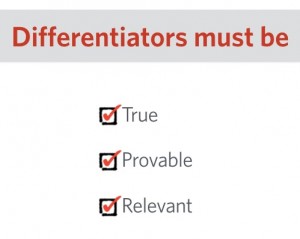Sales and marketing teams have become more and more aligned in recent years, especially in B2B organizations. History may show a past of battles, resulting in scars and wounds between the two departments, but it’s imperative that they now work together.
Marketing must support sales, and sales must support marketing. Sales is the delivery vehicle for marketing’s message, and the main intention of marketing is to guide a prospect through to a sale.
Traditionally, marketing teams have done a great job raising awareness of products and nurturing the coldest of leads until a salesperson gets a prospect on the phone. But increasingly, the thing that will close a deal is more marketing. Selling situations are getting more complex. More stakeholders are involved in deals. More is on the line for all parties involved.
Supporting the Champion
Here’s a common scenario: A sales team has won over a champion inside a target company. This champion is a person who will regularly use the team’s product and understands how valuable it will be. But the champion lacks the authority to make a buying decision. Instead, this person needs to build the case internally that a) a need exists and b) this product meets that need. The champion asks the sales team for some material to convince stakeholders and shares some new objections that have come up in internal meetings.
In many cases, all that’s needed here is a case study and a few customer testimonials. Ideally it directly relates to their situation and addresses the objections that are being raised. Even better yet, the marketing team has a library of documents — blog posts, slide decks, one-pagers, case studies and testimonials — a salesperson can select from and quickly deliver to their prospect to move the deal forward.
How can you make sure you’re getting the right assets from your marketing team?
First, let’s take a step back and guarantee they’re playing on the same team. To ensure sales isn’t yelling at marketing for sending them unqualified leads, and to attest that marketing isn’t hounding sales to close more leads they’ve been sent, Mark Roberge of Hubspot recommends a Service Level Agreement (SLA). This is designed to establish similarly quantified agreements between the two teams. Instead of focusing on raw numbers, your teams should be focusing on implied value of leads generated. This puts sales and marketing on a similar revenue quota.
Second, after this is established, in order to get the right assets from your marketing team, tell them what you need. It’s as easy as that.
The more specific you can get, the better. At a growing company, sales should effectively guide a large portion of marketing activity. But that can’t happen without a consistent flow of information from sales to marketing.
“I take all my cues from sales,” Jeremy Boudinet, Ambition’s Marketing Director told me. “I write about what they tell me. I listen to their conversations. I look at our current customers and see who’s succeeding and how they’re succeeding.”
The Daily Growth Standup
It sounds simple because… well, it is. At PersistIQ, we just implemented a daily growth startup between our marketing and sales teams. We start every meeting at the top of the funnel and work our way down. Each member reports on their one metric that matters most and the activity related to that metric. This way, each member of the sales team knows what I’m doing on the marketing side, and I know the objections everyone is encountering in the field when they’re out talking to prospects and customers.
I get to hear in near real time the roadblocks our Sales Development Reps (SDRs) and Account Executives (AEs) are running into. This helps me plan my pipeline so I stay focused on projects that will be as helpful as possible to closing deals.
When an AE tells me in that meeting, “This deal didn’t close because of this reason,” or “These are the words the customers are saying now,” I can get out in front and address these issues before the next customer thinks to ask it.
Growth is a Team Effort
Gone are the days where each department sits in isolation from all the rest. The scope of roles are broadening as each team member needs to understand roles of members in other departments in order to support growth. No more heated exchanges at the water cooler or criticizing behind the other department’s back. After all, let’s not forget we’re all working towards the same goal: growth!
In the words of the most successful basketball coach in NBA history, Phil Jackson, “The strength of the team is each individual member. The strength of each member is the team.“
Business & Finance Articles on Business 2 Community(142)





